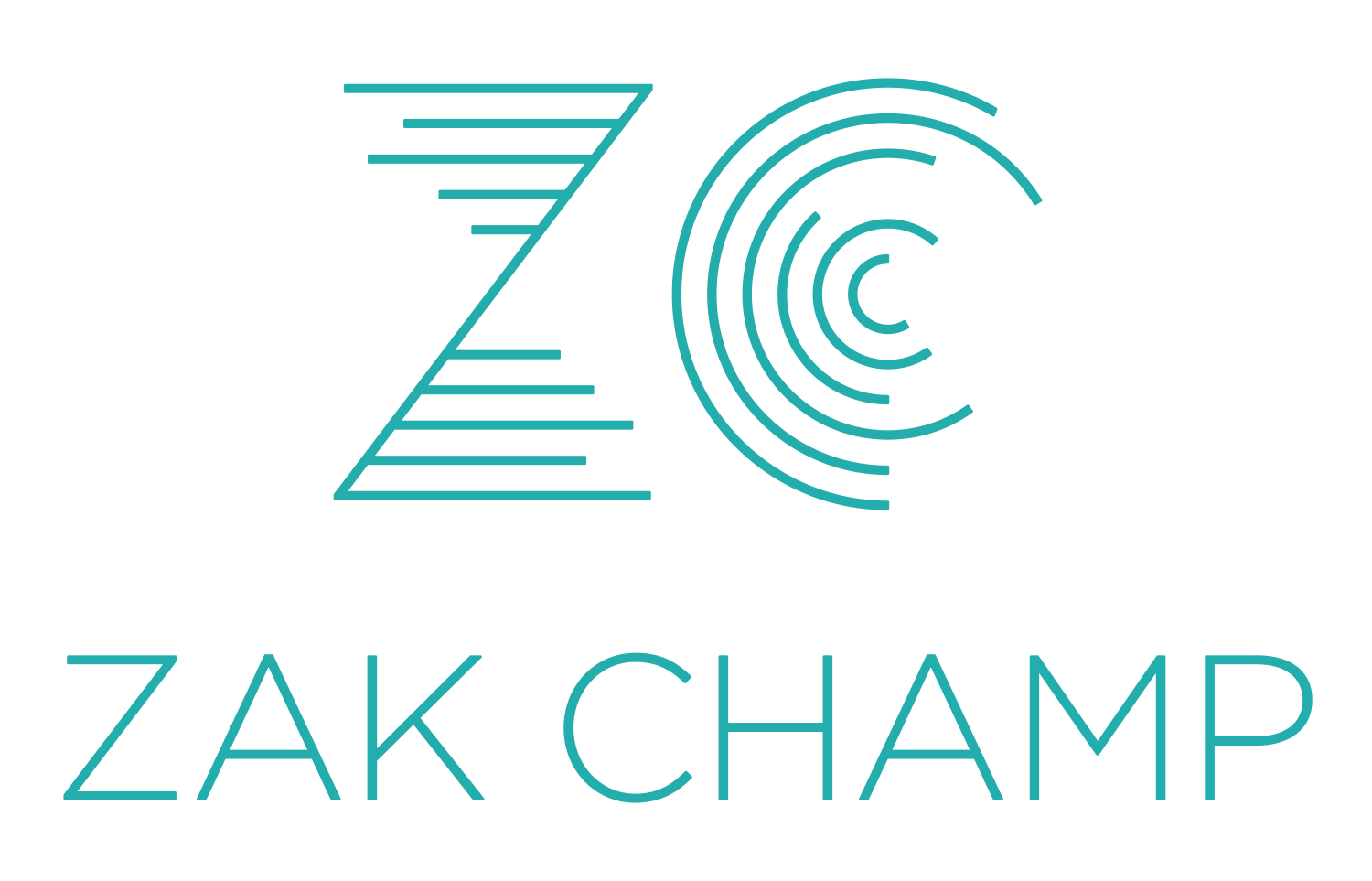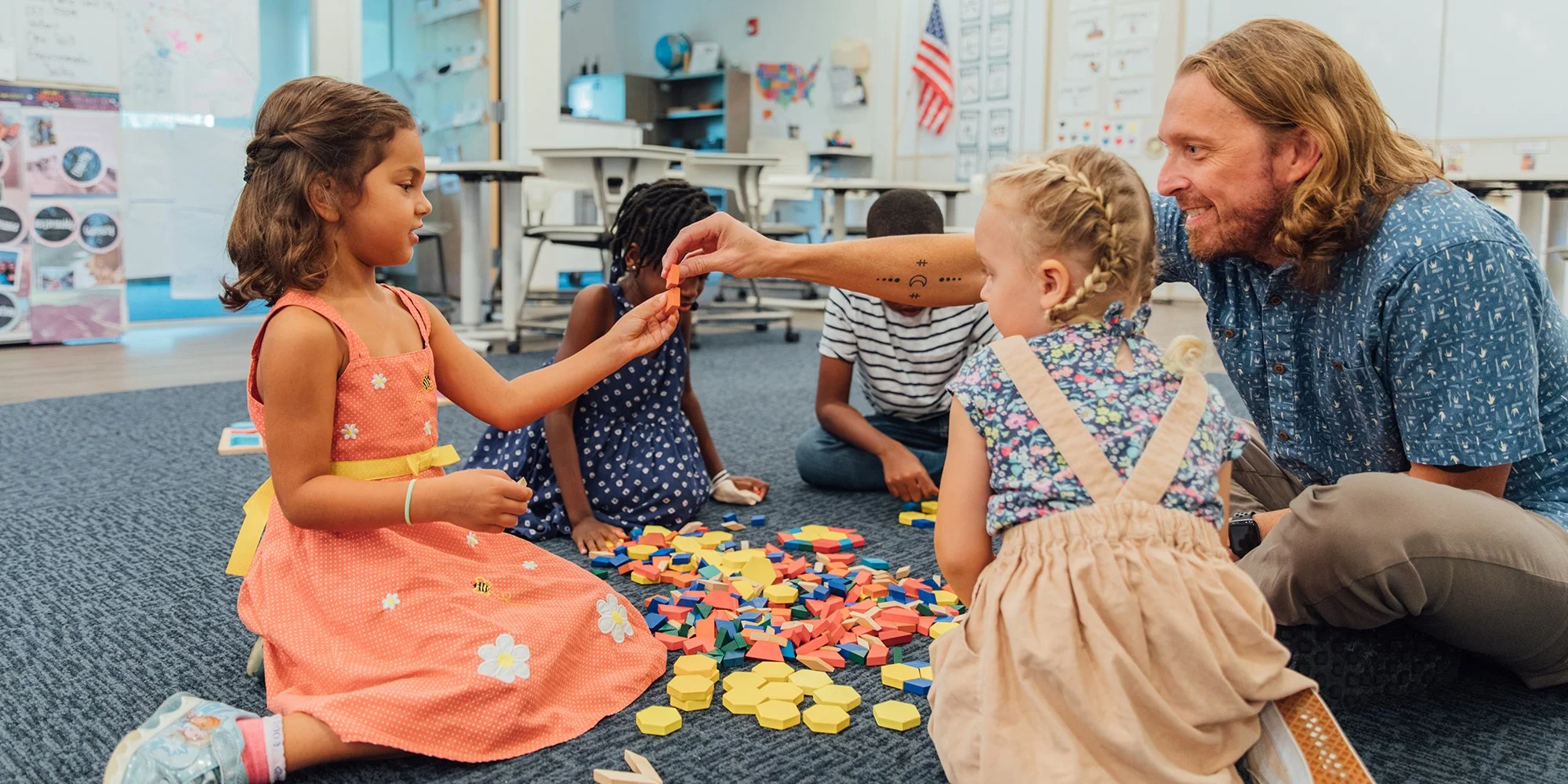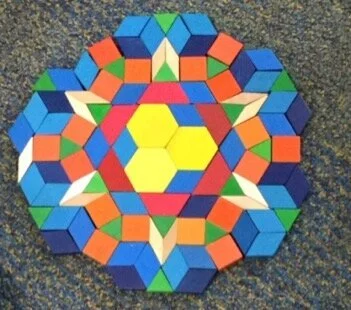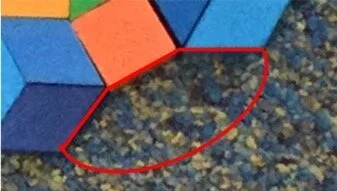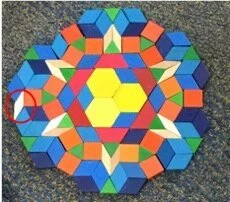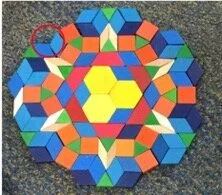Pattern Block Play
I. Love. Pattern. Blocks. There it is. That literally could be this whole post. If you read no further, I’m good with that. Because pattern blocks are the best.
I love the way the shapes interact with each other. I love the negative space some shapes leave when they are composed. I love thinking about which angles will fit into which spaces. And, mostly I love building stuff with young students. I am my most creative self when I build with them. They always inspire and challenge me to think about the relationships amongst the blocks in different ways.
Over the past few weeks, I have shared some of my students’ pattern block creations via Twitter.
My students were so excited that their work was being shared with so many math teachers across the globe, and this made us want to make even more!
And then, this happened.
My good friend and colleague, Emily, was right there to help take this work to another level. Previously my students and Emily’s students had worked on a collaborative project involving a penny pattern. Our classes met live via Google Meet and we had a notice/wonder conversation.
So, we decided that this time we would try something asynchronous. I took pictures of my students' work. She took pictures of her students' work. We showed selected pieces to our classes and asked them what they noticed/wondered. Here’s the first piece I showed my students. I would encourage you to take a minute to reflect on your own noticings and wonderings before heading forward.
Here is what my students noticed and wondered:
Noticings
“It looks like a flower”
“I see a star in there from the hexagons in the middle out to the green triangles. And it looks like the Hanukkah star”
“I see little houses (tan rhombuses and triangles)”
“There are many different colors”
“I noticed the star in the middle”
“I noticed this star (three orange squares and green triangle)”
“I noticed these blue ones could be hexagons”
“I noticed that they used all of the different pattern blocks”
“When we built some of ours, we saw that same space on the outside.”
Wonderings
“How long did it take to do it?”
“I wonder how they made it?”
“How did you make everything the same on both sides?”
“Why did they put yellow hexagons in the middle and not use any more?”
“How many of each different color are there? How many in all?”
“How many shapes did they use?”
“I wonder if they used all the shapes in their bin?”
“Why are there tan rhombuses on all sides?”
“Why are some of the rhombuses darker and lighter?”
“Why is this one random tan rhombus on the side?”
“Why is the blue rhombus at top missing/on the side?”
There’s a lot to take in there. And like you, I was so excited to hear the things that they were interested in! However, these three statements immediately jumped out at me.
“When we built some of ours, we saw that same space on the outside.”
When this student said this, I invited them up to the board (I was projecting the picture) and asked them to clarify what they meant. They pointed out this space.
This first grade student was making a connection to a piece that they worked on and remembered that they had that same space to fill as they continued to add on to the shape! They were talking about the angles. What a great connection!
“Why is this one random tan rhombus on the side?”
This student noticed that there was a block that they felt was not in the right space. They were noticings some asymmetry in a piece that at first appeared to be symmetrical to them. I wondered what Emily’s student might say about this piece as well! Was it intentional? Or accidental? Does it really matter?
“Why is the blue rhombus at top missing/on the side? All the other spaces like this have three blue rhombuses.”
This was another example of a student closely examining a piece of student work! It left me wondering these things; (a) What other activities engage students at this level? (b) What other things can we do that will help students spend an extended amount of time with one piece? (c) How can we continue to squeeze all the math we can out of an activity?
I continue to be amazed by all of the math we can get from these pattern block creations and conversations. And, if you are like me, you can get more right now over at Emily’s blog where she shares what happened when her students investigated my students’ pattern blockwork.
Check it out here.
